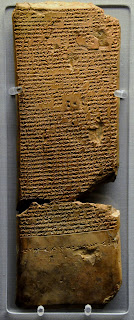Who is Ishtar?
 |
| Relief of Ishtar Standing on a Lion 17th-19th Centuries BC |
Ishtar’s Journey into the Underworld: Ereshkigal and Enki
 |
| Descent of Ishtar Epigraph 7th Century |
Creation of Seasions via Ishtar's Descent
 |
| A hand of Goddess Ishtar 9th Century BC |
Ishtar's Journey into the Underworld of Ereshkigal
 Reviewed by Articonog
on
January 09, 2020
Rating:
Reviewed by Articonog
on
January 09, 2020
Rating:
 Reviewed by Articonog
on
January 09, 2020
Rating:
Reviewed by Articonog
on
January 09, 2020
Rating:





No comments: